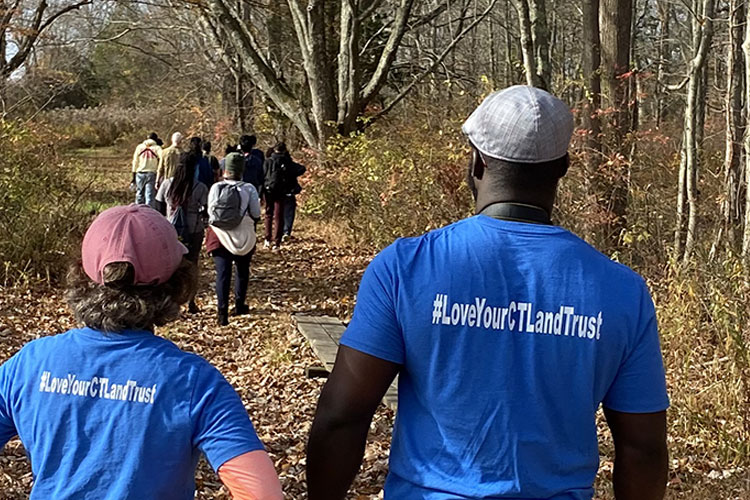Read more for tips on the Birdability website to ensure your event is communicated clearly to be inclusive and inviting to all.
Open to All: A Disability Inclusion Guide for Land Trusts was created by a dedicated group of people who came together to form an Advisory Council on Inclusive Health and Disabilities under the guidance of the Land Trust Alliance and their partner, the Lakeshore Foundation.
This article written by Syren Nagakyrie at Disabled Hikers provides helpful tips when creating online content for people with sensory disabilities.
11/5/21 – Writing the Land is a collaborative project between land trusts and artists to help raise awareness for the preservation of land, ecosystems, and biodiversity. The program helps poets “adopt” a conserved property, partnering them with a land trust for the calendar year.
Poets visit the properties and create poems inspired by the land. At the end of the year, the poems are published, with a chapter featuring each participating land trust.
CLCC’s sign collection includes example signage for land trusts and other conservation and trail organizations. If you have helpful signage to share, please contact Cristina at chayden@ctconservation.org
For additional (non-CT) samples visit WeConservePA’s sign gallery: https://gallery.conservationtools.org
For CT COVID-19 Sample Trails Signage click here.
As part of CLCC’s virtual programming, Conserving Land by Staying Connected and to continue to be responsive to the needs of Connecticut’s land trust community, a compilation of documents, resources, and recordings of previous programs have been included below to best serve land trusts and conservation organizations at this time.
Learn how to take a quality videos using your smartphone, cover some of the accessible video editing platforms out there and provide information on how to make the most of sharing these videos on your Facebook and Instagram pages.
Watch the recording and access the resources from this workshop.
Connecting with People
What do you want to see happen? Whatever your vision, to achieve it, you’re going to need people on your side. People who love the land. Who act. Who give. Who vote. And to engage with people, you need to communicate.
There is increasing pressure to convert land, and land trusts need to swell the ranks of allies and supporters to meet these growing threats.
